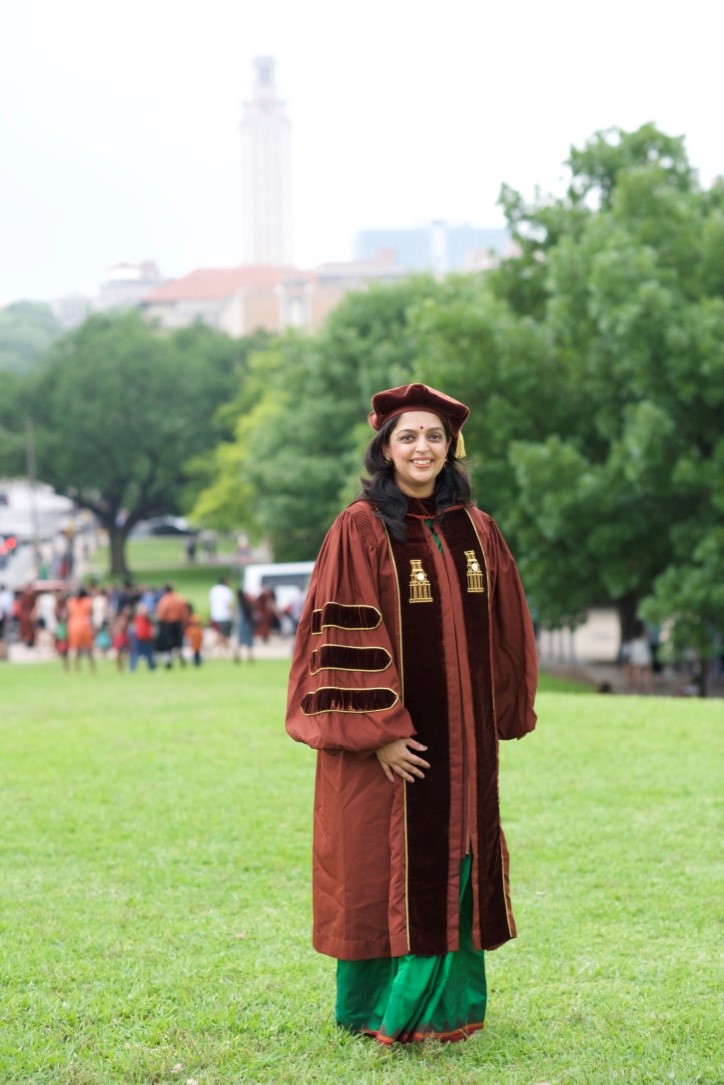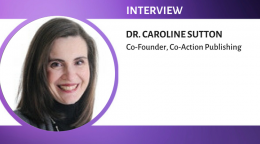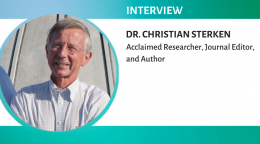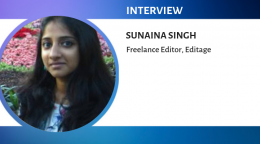Changing career paths may stretch you out of 'your comfort zone' but that's where the magic happens!
Interview with Dr. Karishma Kaushik
Dr. Karishma Kaushik, Assistant Professor; Ramalingaswami Re-entry Fellowship from the Department of Biotechnology (DBT), Government of India, talks about how she decided to become a physician scientist; her experiences running a lab; the role of science communication; and best practices for researchers, mentors, and supervisors.

Dr. Karishma Kaushik is a recipient of the Ramalingaswami Re-entry Fellowship from the Department of Biotechnology (DBT), Government of India. After completing her MD in Clinical Microbiology from the Armed Forces Medical College, Pune in India in 2008, Dr. Kaushik went on to pursue a PhD in Molecular Genetics and Microbiology from the University of Texas in Austin, USA, where she investigated novel strategies to overcome antibiotic resistance in bacterial populations. After spending over a decade in the US, Dr. Kaushik chose to return to India to activate her re-entry fellowship and start a lab of her own. Her aim was to make the most of her knowledge as a medical doctor and training as a scientist. She currently leads the Human-Relevant Infection Biology Group (at the Institute of Bioinformatics and Biotechnology, Savitribai Phule Pune University/University of Pune), that studies complex infection states, with a focus on chronic wounds and biofilms in order to help develop composite, precision-based infection therapeutics. She is a recipient of multiple awards, has several publications to her credit, and has considerable teaching experience. Dr. Kaushik is passionate about bridging the gap between academic research and the bedside, and aims to be a part of developing India’s first MD/PhD program, which would encompass clinical training such as hospital and laboratory training in basic science skill sets such as discovery-based research, grant writing, scientific writing and publishing, leading to a composite physician-scientist.
In this three-part conversation, Dr. Kaushik shares her experiences as a physician-scientist, lab head, mentor, and science communicator. In this first part we focus on Dr. Kaushik’s overall experiences and thoughts about being a physician-scientist and her experience of moving back to her home country to continue research.
What led you to pursue an academic path after a medical degree?
Alright, so we are starting with some hard truths! I realised during my internship (after my Bachelor of Medicine and Bachelor of Surgery, or MBBS, degree) in a bustling government hospital that while the academic side of medicine had fascinated me and I excelled at it, I really did not enjoy the ‘practice’ of medicine. Recognizing this, I chose to pursue an MD in Clinical Microbiology. During my MD, I undertook a thesis project to genotype clinical chicken-pox strains across India. The work involved collecting samples from patient blisters, developing a viral transport medium, extracting DNA, and identifying molecular differences between the wild-type and vaccine strain. I worked briefly with PhD students from Dr. Yogesh Shouche’s group at the National Centre for Cell Science in in Pune, India. They helped me with sequencing the strains and introduced me to the exciting world of bench research! The thesis got me publications and awards, and at the end of my MD, I wanted to be a physician-scientist! I was so committed to this path that I chose to pursue a PhD after almost nine years of medical education, and that too in the US, where PhDs are known to take a while! I went on to do my PhD in Microbiology and Molecular Genetics with an interdisciplinary biophysics group, and have never looked back since. Changing career paths and fields of work may stretch you out of ‘your comfort zone’, but, as they say, that’s where all the magic happens!

Above - Karishma at her PhD convocation at the University of Texas at Austin (2016). “For me, wearing a saree for the convocation symbolized the epic journey Indian women have made; from Anandibai Joshi going to the US to study medicine, to me going there to study biofilms almost 100 years later”, she says.
You are a recipient of the Indian government’s Ramalingaswami Re-entry Fellowship, which encourages early-career scientists to return to the country from abroad. What made you decide to move back to India?
This is a frequent and animated dinner table debate in my family, I will tell you why! My husband has always planned to return to India (he lived in the US for 15 years, left India when he was 22!); this was one of the first things we spoke of when we met. I never really understood the gravity of this until after my PhD, when we actually had to start making concrete plans. My ten years in the US included adjusting to a completely new country, completing a PhD, and having a baby, and to be honest, I had second thoughts about taking on another major life change. Nevertheless, I knew the one thing that would help me ‘take the plunge’ would be having strong professional goals to come back to pursue. I went about building that by applying to the Ramalingaswami Re-entry Fellowship and developing a plan for my independent research. So, while my husband spearheaded the idea, I relentlessly pursued the professional opportunities to make it happen!
We recently marked two years on our return, and as I shared on Twitter:
It's almost two years since we moved back to India! Many called it ‘brave’, some might have thought ‘foolhardy’. We simply followed our gut. The transition has had tough times, but I will say one thing-India, as always, has embraced me! #AcademicTwitter @sne_kad @vanduz95
— Karishma Kaushik, MBBS, MD, PhD, Mom (@KaushikLab) May 11, 2020
For other early-career researchers contemplating a return, I will say that there are distinct advantages and opportunities of doing science in your home country. For me, the diversity of paths I can simultaneously pursue and multiple ways I can to contribute to science, without the bondages of immigration and that ‘outsider’ tag, has been liberating. These include engaging with biotech start-ups, leading my own science outreach initiative, and being involved with government committees and policymakers, to name a few. These opportunities can be game-changing in one’s career trajectory, and are few and hard to come by in a ‘foreign’ ecosystem.
What, in your view, are some major problems or challenges in the Indian academic landscape? And what are some of the potential solutions for these?
I have been here two years, and it is early days yet, but one of the things that I would like to improve is mentorship in Indian academia. I have been the product of strong mentorship (throughout my life and career), and even in my return to India phase, and I recognize its potential to transform individuals. I remember at certain tough times in this journey, I met Prof. LS Shashidhara, and shared my concerns with him. He heard me out each time, and pointed me in a new direction. Looking back, that is all I needed to keep going. This culture of mentorship starts with scientists being accessible to younger colleagues, early-career PIs building non-hierarchical research groups, and acknowledging and promoting young people in the field. For this we as group leaders should recognize that there is enough room for everyone to succeed, and when a young person in Indian academia succeeds, it is a collective success for the clan.
Mental health is emerging as an important topic of discussion in academia. What, in your view, are some major problems or challenges in the Indian academic landscape that could potentially cause a lot of anxiety and stress among researchers? And what are some of the potential solutions for these?
There are many reasons here, and they vary across individuals and academic cultures. Speaking for myself, I have observed anxiety and stress to result from feeling that ‘I have limited options’, ‘I have to make this work’, or ‘If not this job, then what else’. This is common among academics, possibly because we get so caught up in our immediate work and environments. Recognising this, I have proactively sought and engaged with non-academic scientific pursuits and developed these skills, throughout my academic career. They include experiences with science outreach, communication, entrepreneurship, policy and even diplomacy. Just knowing that there are options, and that I have the potential to excel at them, has certainly helped me keep my stress and anxiety in check during tough times. I hope this can be of help to others!
Read the whole interview series with Dr. Karishma Kaushik:
- You are reading – Part 1 – Changing career paths may stretch you out of ‘your comfort zone’ but that’s where the magic happens!
- Part 2 – We should be the change we want to see in academic science!
- Coming up: Part 3 – Researchers need to work on the ‘communication’ part of science communication
Comments
You're looking to give wings to your academic career and publication journey. We like that!
Why don't we give you complete access! Create a free account and get unlimited access to all resources & a vibrant researcher community.













